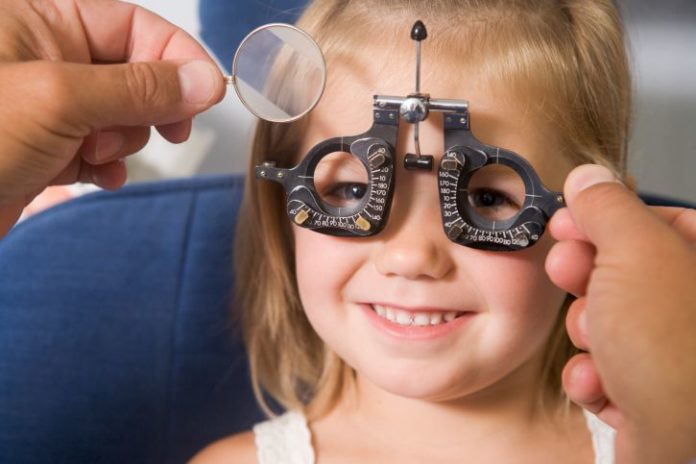The standard treatment for amblyopia, a condition of poor vision in an otherwise healthy eye, is patching: covering a child’s better-seeing eye with a patch for two hours a day to improve vision in the weaker eye. Doctors often suggest increasing the daily duration of patching if children stop making progress, even though there have been limited data showing this approach actually works. However, a recent report by the Pediatric Eye Disease Investigators Group (PEDIG) provides evidence that increasing patching from two to six hours a day is effective at treating persistent amblyopia. The research was funded by the National Eye Institute, a part of the National Institutes of Health.
“We really didn’t know what to do when a child stopped improving after patching two hours a day,” said David K. Wallace, M.D., professor of ophthalmology and pediatrics, Duke University School of Medicine, and lead author of the report. “With this study, we now have clear evidence to support the practice of increasing the duration of patching to six hours a day for stubborn amblyopia.”
Good vision requires that both eyes and the brain work together. If the brain fails to get clear input from both eyes, it may play favorites and process more visual information from the good eye and ignore information from the eye with poorer vision. In amblyopia, one eye may have better vision because it focuses better or because the eyes are misaligned, a condition called strabismus. The connections between the eyes and brain are still developing in children. Patching the stronger eye reinforces connections between the brain and the weaker eye, thus treating the problem. Improving the focus of the weaker eye as much as possible with a prescription lens is also necessary in most cases.
PEDIG researchers enrolled 169 children with persistent amblyopia in a clinical trial that compared two treatment groups: one group continued with two hours of daily patching and another increased daily patching to six hours. All participants were between the ages of 3 and 8 years and had stopped improving after previously receiving two hours of daily patching for at least 12 weeks. After 10 weeks in the clinical trial, amblyopic eyes of children in the six-hour patching group could see on average an additional 1.2 lines on an eye chart, while amblyopic eyes in the two-hour patching group improved on average only 0.5 lines on an eye chart. Even more compelling was the observation that about 40% of children in the six-hour group had two or more lines of improvement.
The report outlines an evidence-based, staged approach for treating amblyopia. The first stage is wearing eye glasses with prescription lenses, if needed, to correct vision as much as possible. Patching for two hours a day—or using eye drops or lens filters that blur vision in the better eye—is recommended if amblyopia persists after wearing glasses for 10 weeks. If amblyopia persists after 10 weeks with two-hour daily patching, PEDIG recommends children patch for six hours per day. Once maximum visual acuity is obtained, children should be monitored for recurrence.
“The decision on when to quit patching should be decided case by case,” said Wallace. “The goal of patching is to achieve 20/20 vision in both eyes, but we know that isn’t always possible. If not, then the goal is to attain the best possible vision, which can only be identified by closely monitoring changes in the child’s vision.”
Amblyopia is the most common cause of vision impairment among children, affecting about two to three out of every 100 children. An eye exam can detect the problem. Amblyopia is more difficult to treat as children grow older, so early detection and treatment as well as consistent follow-up are important.
(Source: National Eye Institute)










